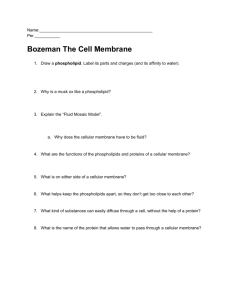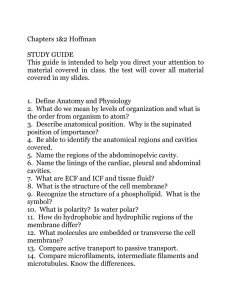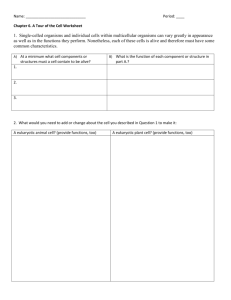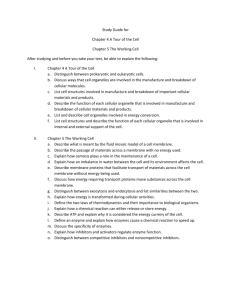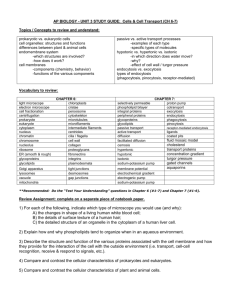Biology 1406
advertisement
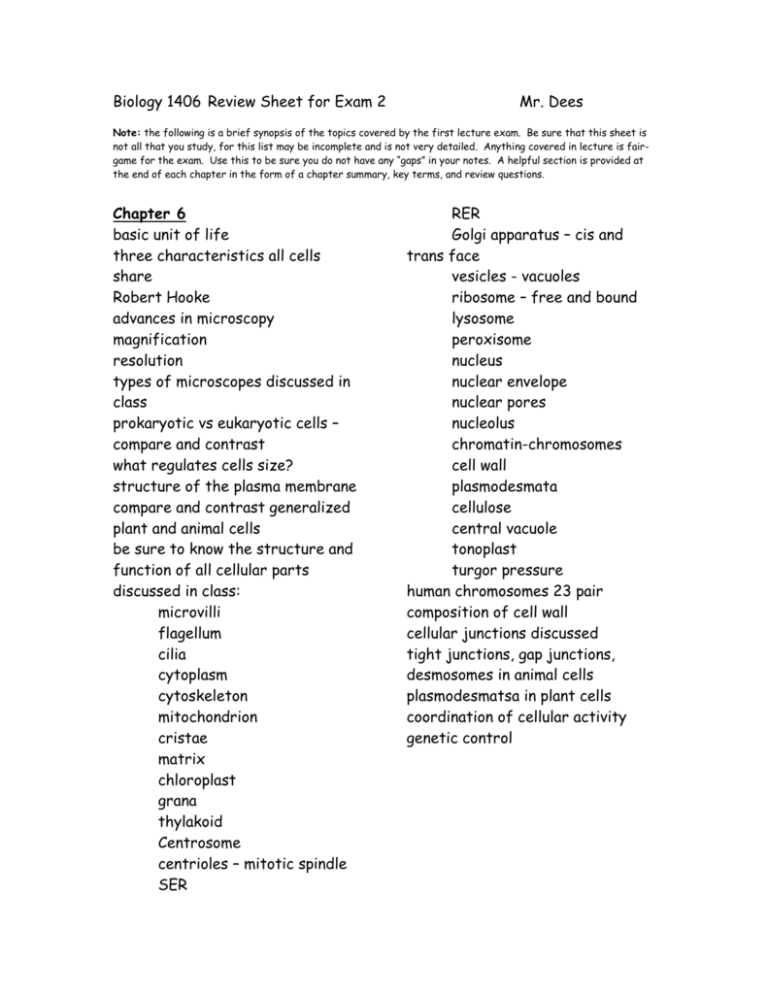
Biology 1406 Review Sheet for Exam 2 Mr. Dees Note: the following is a brief synopsis of the topics covered by the first lecture exam. Be sure that this sheet is not all that you study, for this list may be incomplete and is not very detailed. Anything covered in lecture is fairgame for the exam. Use this to be sure you do not have any “gaps” in your notes. A helpful section is provided at the end of each chapter in the form of a chapter summary, key terms, and review questions. Chapter 6 basic unit of life three characteristics all cells share Robert Hooke advances in microscopy magnification resolution types of microscopes discussed in class prokaryotic vs eukaryotic cells – compare and contrast what regulates cells size? structure of the plasma membrane compare and contrast generalized plant and animal cells be sure to know the structure and function of all cellular parts discussed in class: microvilli flagellum cilia cytoplasm cytoskeleton mitochondrion cristae matrix chloroplast grana thylakoid Centrosome centrioles – mitotic spindle SER RER Golgi apparatus – cis and trans face vesicles - vacuoles ribosome – free and bound lysosome peroxisome nucleus nuclear envelope nuclear pores nucleolus chromatin-chromosomes cell wall plasmodesmata cellulose central vacuole tonoplast turgor pressure human chromosomes 23 pair composition of cell wall cellular junctions discussed tight junctions, gap junctions, desmosomes in animal cells plasmodesmatsa in plant cells coordination of cellular activity genetic control Chapter 7 relative thickness of plasma membrane Who are Gorter and Grendel, Davson and Danelli, Singer and Nicolson and what did each do?? fluid mosaic model factors that allow membrane fluidity functions of membrane proteins – there were six discussed in class integral and peripheral proteins glycolipds glycoproteins process for synthesis of membrane forms of membrane transport active vs passive diffusion concentration gradient equilibrium osmosis hypotinic – hypertonic – isotonic solutions net movement of water solute – solvent- solution effects of tonicity on plant and animal cells contractile vacuole of paramecium facilitated diffusion channel protein carrier protein sodium-potassium pump bulk transport Exocytosis endocytosis Phagocytosis Pinocytosis receptor-mediated endocytosis Chapter 8 metabolism defined role of enzymes catabolic pathways anabolic pathways energy kinetic energy potential energy thermodynamics 1st and 2nd laws of thermodynamics and relevance to living systems examples three types of cellular work with examples ATP know the process by which ATP produces energy for cellular work phosphorylation catalysts enzymes substrate active site enzyme-substrate complex factors that influence enzymatic activity with examples discussed in class

